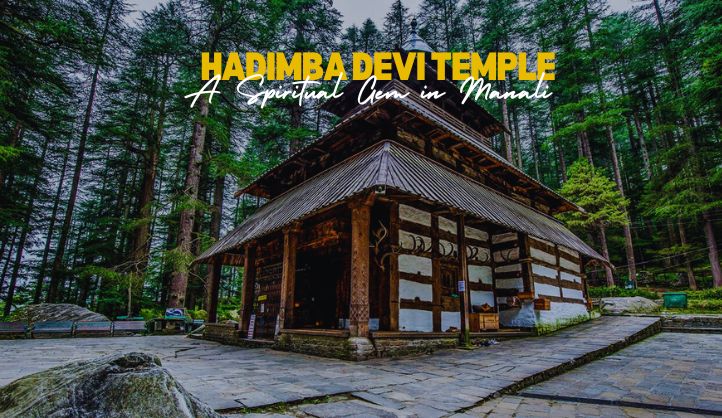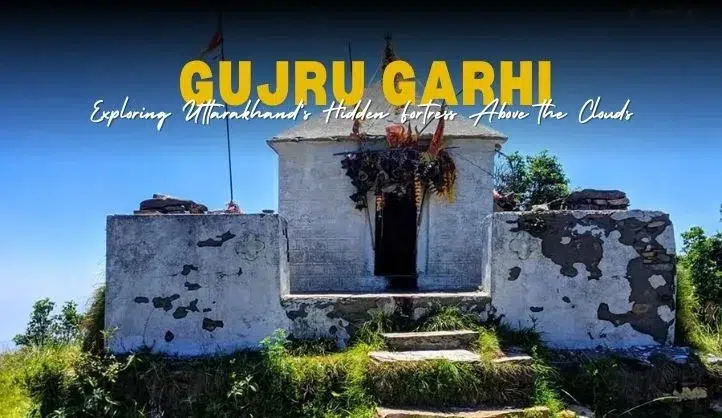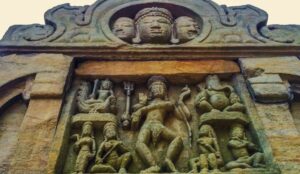In the beautiful hills of Manali, the Hadimba Devi Temple is one of the most cherished spiritual landmarks in Himachal Pradesh, India. Surrounded by lush cedar forests and set against the backdrop of snow-capped peaks, the temple attracts visitors from across the world. Whether you’re a devotee, a history enthusiast, or someone looking to connect with nature, this temple offers a unique experience that combines spirituality, culture, and breathtaking natural beauty.
In this blog, we will take you on a journey to discover the Hadimba Devi Temple’s history, architecture, significance, and enchanting vibe. Let’s dive in!
The Story Behind the Temple
Hadimba Devi Temple also called the Dhungri Temple, is dedicated to Goddess Hadimba, a character from the Indian epic Mahabharata. According to the legend, Hadimba was a demoness who lived in the forest. She had immense strength but a kind heart.
When the Pandavas, the five brothers from the Mahabharata, were exiled to the forest, Bhima, the strongest of the Pandavas, encountered Hadimba. The two fell in love, and Hadimba left her demon ways to marry Bhima. They lived together for a year, and after their son, Ghatotkacha, was born, Bhima left to continue his journey with his brothers. Hadimba, however, stayed back and later meditated deeply in the forest. Her devotion earned her the status of a goddess, and the people of the region began worshipping her as Hadimba Devi.
The temple was built in her honor, and to this day, it remains a sacred place where locals and tourists pay their respects to the goddess.
Architecture That Tells a Tale
The Hadimba Devi Temple is unlike typical Hindu temples with towering spires. Instead, it has a unique architectural style that stands out. Built-in 1553 by Maharaja Bahadur Singh, the temple showcases the distinct pagoda-style design that is common in Himachal Pradesh.
The temple is made of wood and stone, blending perfectly with its natural surroundings. It has four tiers of roofs, with the topmost one made of metal, shaped like a cone. The wooden doors and walls are beautifully carved with intricate designs of flowers, animals, and mythological figures. The temple’s entrance features horns of animals like buffaloes, reflecting the tribal traditions of the area.
The simplicity of its structure and the use of natural materials create a sense of harmony with the surrounding cedar forest, making the temple look like it belongs there.
Sacred Surroundings
The temple is located in the middle of the Dhungri forest, a dense grove of deodar (cedar) trees that adds to its mystique. The fresh mountain air, the sound of rustling leaves, and the soft rays of sunlight filtering through the tall trees make the place feel magical.
Visitors often describe the surroundings as calming and meditative. The forest not only enhances the spiritual vibe of the temple but also offers a refreshing escape from the bustling streets of Manali. If you’re a nature lover, a walk through the forest is an experience you don’t want to miss.
The Main Idol of Worship
Inside the temple, the main idol of Hadimba Devi is not a traditional statue but a stone that symbolizes the goddess. Devotees believe that the stone is the spiritual representation of Hadimba. This reflects the tribal origins of the temple, where natural objects were often worshipped as symbols of divine power.
Unlike many temples where loud chants and rituals take place, the Hadimba Devi Temple has a quieter and more peaceful atmosphere. Devotees come here to pray, meditate, and seek blessings from the goddess.
The Fair and Festivities
One of the best times to visit the Hadimba Devi Temple is during the Hadimba Devi Fair, which is held every year in May. The fair celebrates the goddess and her legacy and is a vibrant mix of spirituality, culture, and fun.
Local villagers dress in traditional attire and gather to pay their respects to the goddess. Folk music, dance performances, and rituals make the fair a lively event. Traders also set up stalls selling handmade crafts, clothes, and local delicacies, adding to the festive spirit.
Another important event linked to the temple is the celebration of Dussehra. While most parts of India celebrate Dussehra to mark Lord Rama’s victory over Ravana, in Kullu-Manali, it is also an occasion to honour Hadimba Devi, as she is considered one of the primary deities of the region.
A Place Loved by Tourists
Hadimba Devi Temple is not just a pilgrimage site but also a favorite spot for tourists. Its scenic location and cultural significance make it a must-visit place in Manali. Here’s what you can do when you visit:
- Explore the Temple: Spend time admiring the wooden carvings, the unique architecture, and the spiritual vibe of the temple.
- Walk in the Dhungri Forest: The forest offers plenty of spots for nature photography and peaceful walks. You might even spot some local wildlife.
- Visit the Nearby Attractions: Close to the temple, you’ll find other attractions like the Manu Temple, Old Manali, and the Vashisht Hot Springs.
- Take Photos: The temple and its surroundings provide stunning backdrops for photos, especially during sunrise or sunset.
- Try Local Food: Many food stalls near the temple offer traditional Himachali snacks, so make sure to treat your taste buds.
How to Reach Hadimba Devi Temple
Reaching the Hadimba Devi Temple is relatively easy, as it is well-connected to Manali town.
- By Air: The nearest airport is in Bhuntar, located about 50 km from Manali. From Bhuntar, you can take a taxi or a bus to reach Manali.
- By Road: Manali is well-connected by road to major cities like Delhi, Chandigarh, and Shimla. You can take a bus, self-drive, or hire a taxi to reach Manali. Once in Manali, the temple is about 2 km from Mall Road and can be reached by foot, auto-rickshaw, or taxi.
- By Train: The nearest railway station is Joginder Nagar, about 165 km from Manali. From there, you can take a bus or taxi to reach Manali.
The temple is located amidst the Dhungri forest, and visitors need to walk through a scenic path to reach it. The walk itself is a delightful experience.
Best Time to Visit Hadimba Devi Temple
The temple is open throughout the year, but the best time to visit depends on the kind of experience you’re looking for:
- Summer (March to June): These months offer pleasant weather, making it ideal for sightseeing and exploring the lush greenery around the temple.
- Monsoon (July to September): The rains make the forest look even more vibrant, but the pathways can become slippery, so caution is advised.
- Autumn (September to November): The cool breeze and golden hues of autumn create a serene atmosphere, perfect for a peaceful visit.
- Winter (December to February): If you love snow, visiting during winter is a magical experience. The temple and its surroundings are covered in snow, offering stunning views.
Each season offers a unique charm, but summer and autumn are the most comfortable times to visit.
Nearby Places to Visit
Manali is a treasure trove of natural beauty and cultural attractions. While visiting the Hadimba Devi Temple, you can also explore these nearby places:
- Manu Temple: Dedicated to the sage Manu, this temple is located in Old Manali and offers a serene atmosphere.
- Old Manali: A quaint village known for its hippie vibes, cafes, and unique culture.
- Vashisht Hot Springs: Famous for its natural hot water springs and a temple dedicated to sage Vashisht.
- Solang Valley: A haven for adventure enthusiasts, offering activities like paragliding, skiing, and zorbing.
- Naggar Castle: A historic castle with stunning views of the valley and a small museum showcasing local art and history.
- Mall Road: The bustling heart of Manali with shops, eateries, and souvenirs to take back home.
These places are within a short distance from the Hadimba Devi Temple, making it easy to include them in your itinerary.
Tips for Visitors
If you’re planning a trip to the Hadimba Devi Temple, here are some tips to make your visit smooth and enjoyable:
- Clothing: Wear comfortable clothes and sturdy shoes, as you’ll need to walk through the forest to reach the temple.
- Respect the Space: As it’s a place of worship, maintain silence inside the temple and follow the rules.
- Photography: You can click photos of the temple and its surroundings, but taking pictures inside the temple may not be allowed. Check with the authorities before clicking pictures.
- Stay Hydrated: If you’re visiting during the summer, carry water and stay hydrated, as walking around the temple can be tiring.
Why You Should Visit
Hadimba Devi Temple is more than just a religious site. It’s a place where history, nature, and spirituality come together. Whether you believe in the divine or not, the temple offers a peaceful retreat from the noise of everyday life. The air of mystery around the goddess Hadimba and the serenity of the forest create a unique experience that lingers in your memory long after you leave.
For those interested in Indian mythology, the temple is a living piece of the Mahabharata, connecting modern visitors to ancient stories. For travelers seeking solace, the temple and its surroundings offer a chance to reconnect with nature and oneself.
Conclusion
Hadimba Devi Temple is a hidden gem in the heart of Himachal Pradesh that deserves a spot on every traveler’s itinerary. Whether you’re visiting Manali for adventure, relaxation, or spiritual exploration, this temple will add a touch of magic to your trip.
So, pack your bags, head to the hills, and let the charm of the Hadimba Devi Temple leave you in awe. Don’t forget to take in the tranquility of the Dhungri forest, immerse yourself in the local culture, and pay your respects to the goddess who is a symbol of strength and devotion.
FAQs About Hadimba Devi Temple
Q1. Where is Hadimba Devi Temple located?
Hadimba Devi Temple is located in Manali, Himachal Pradesh, India, amidst the Dhungri forest, about 2 km from the main town center.
Q2. What is the best time to visit the temple?
The best time to visit is between March to June and September to November, when the weather is pleasant, and the forest is lush green.
Q3. Is there any entry fee for the temple?
No, there is no entry fee to visit the Hadimba Devi Temple.
Q4. How do I reach the temple?
The temple is easily accessible by road. You can hire a taxi or walk from Manali town. It’s about a 15–20-minute uphill walk from the Mall Road.
Q5. What is special about the temple’s architecture?
The temple is built in a unique pagoda style using wood and stone. Its intricate carvings and four-tiered roof make it stand out.
Q6. Can I take photos inside the temple?
Photography is allowed in the temple surroundings, but it’s better to ask for permission before taking pictures inside the temple.
Q7. Are there any festivals celebrated at the temple?
Yes, the Hadimba Devi Fair in May and Dussehra are two significant festivals celebrated here.
Q8. Is the temple accessible to elderly people?
Yes, but there is a slight uphill walk required to reach the temple. Elderly visitors may need assistance.
Q9. Are there food options near the temple?
Yes, small stalls and eateries near the temple serve local snacks and refreshments.
Q10. Can I visit the temple during winter?
Yes, the temple is open during winter, and the snow-covered surroundings make it even more enchanting. However, wear warm clothing as it gets very cold.









